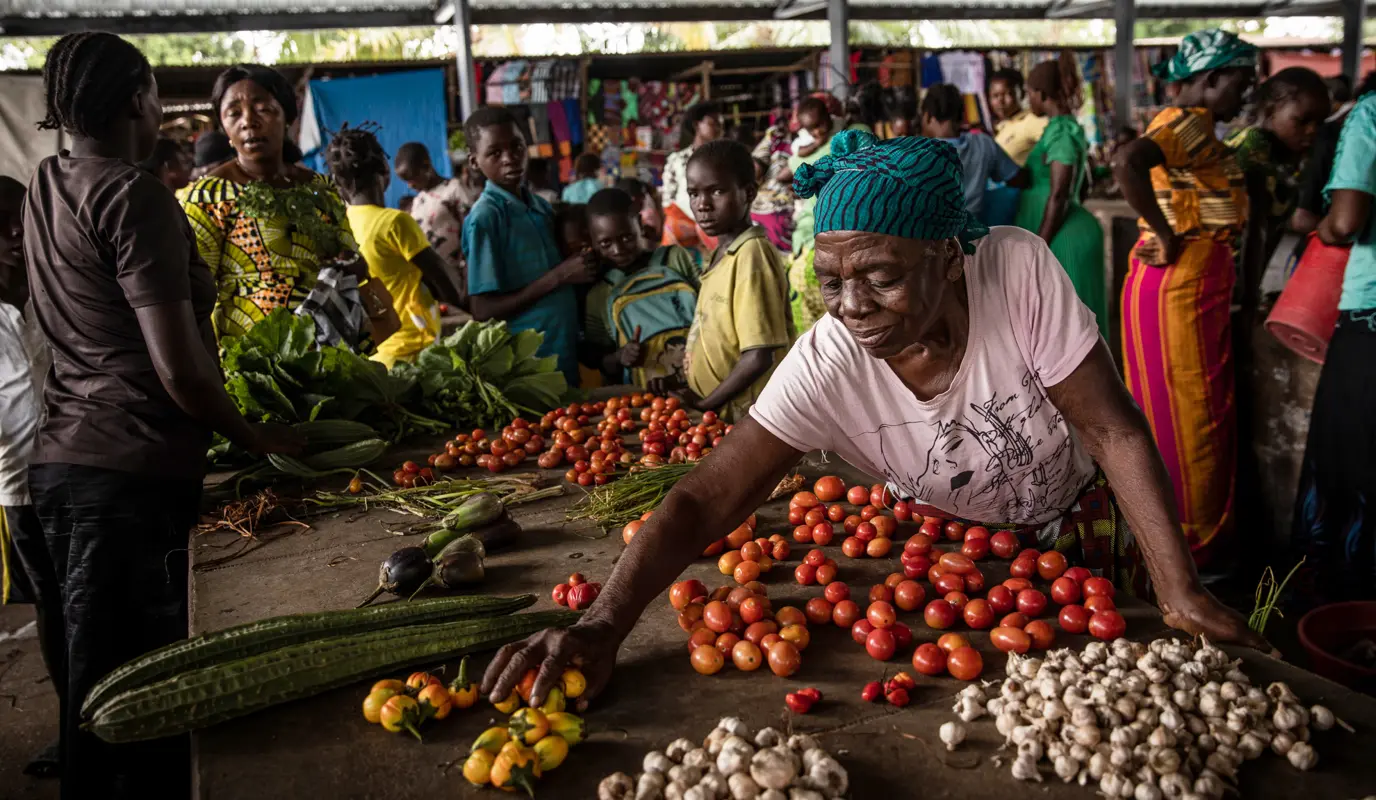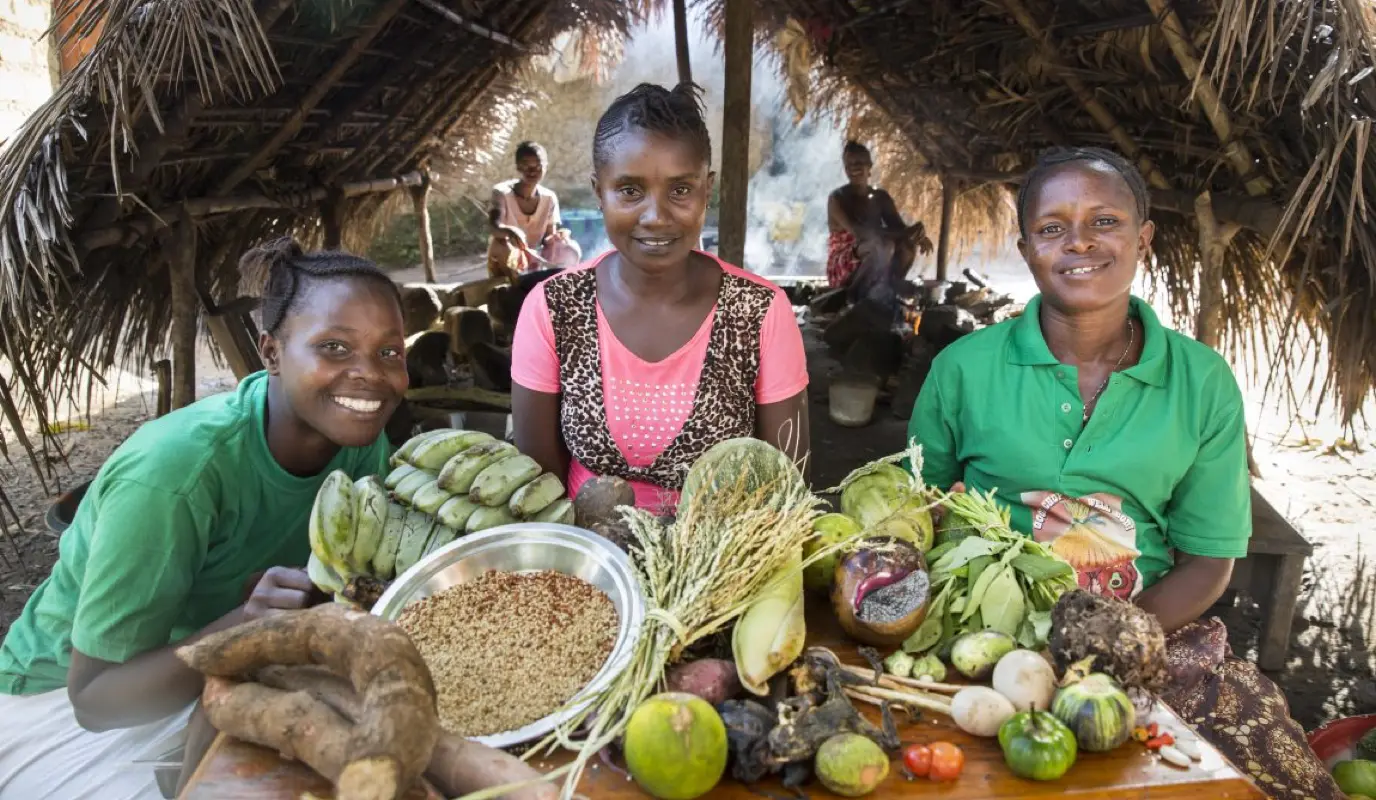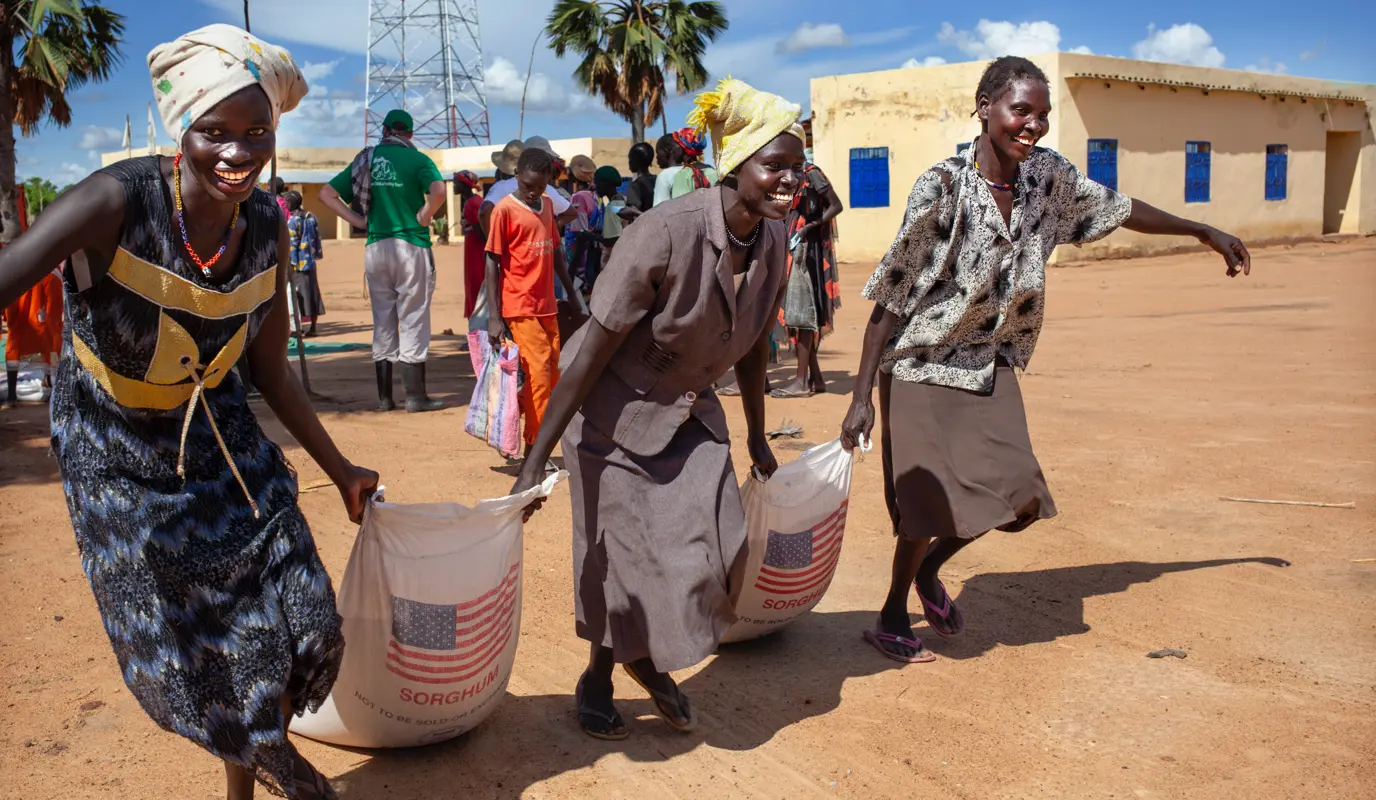News
Conflict and hunger: Five links in a deadly chain
Conflict and hunger exist in a back-and-forth relationship where one tends to increase the other. Unfortunately, in 2021, both are on the rise.
Read More1 in 9 people go hungry each day — but why? Learn about the top 10 causes of world hunger, and what we're doing to solve them.
The world produces enough food to feed all 7.5 billion people, yet more than 10% of the population goes hungry each day.
Why?
As part of the United Nations Sustainable Development Goals, Concern is working to eliminate hunger and malnutrition by 2050. But we need to know what we're really fighting. Here are 10 of the most popular causes of world hunger — and how you can help advance the fight for Zero Hunger.
Poverty and hunger exist in a vicious cycle. Families trapped in the cycle of poverty usually can’t afford nutritious food, leading to undernourishment. In turn, undernourishment makes it difficult for people to earn more money so that they can afford healthy food. Families living in poverty might also sell off their livestock or tools to supplement their income. This buys short-term relief, but perpetuates a longer-term pattern of hunger and poverty that is often passed down from parents to children.
The Democratic Republic of Congo, recognized year over year as one of the world’s poorest countries, has a population of 89.56 million, the majority of whom live below $1.25/day. As of 2021, over 37 million Congolese aren't getting the minimum amount of nutrients they need each day.

Across regions like the Sahel and the Horn of Africa, farming families experience periods before harvests known as “hunger seasons.” These are the times of year when food supplies from the previous harvest are exhausted, but the chance to replenish supplies is still some time off. This leaves families forced to skip one (or more) meals each day in the period before the next harvest — which could be months away.
Conflict and hunger form another vicious cycle. In South Sudan, civil war has led to mass displacement and abandoned fields. The result is crop failure which, combined with a soaring inflation rate that makes imported food unaffordable, has left 7.2 million people in a food crisis. Likewise, Yemen’s ongoing conflict has led to over half the country (approximately 17 million people) in need of urgent action in the absence of ongoing humanitarian food assistance.
Countries like Malawi enjoy relative peace and political stability. However, they are also plagued by hunger due to climate change. Too little — or too much — rainfall can destroy harvests or reduce the amount of animal pasture available. These fluctuations are made worse by the El Niño weather system, and are likely to increase due to changes in climate. Extreme climate patterns also tend to affect the poorest regions of the world the most. The World Bank estimates that climate change has the power to push more than 100 million people into poverty over the next decade.

Hunger isn’t simply a lack of access to food: It’s a lack of access to the right nutrients. In order to thrive, humans need a range of foods providing a variety of essential health benefits. Families living in poverty often rely on just one or two staple foods (like corn or wheat), which means they’re not getting enough critical macronutrients and vitamins, and may still suffer the effects of hunger.
A lack of nutrition is especially important for pregnant and breastfeeding women and young children: Nutrition support during pregnancy and up to the age of five can help protect children for their entire lives. Proper nutrition reduces the likelihood of disease, poor health, and cognitive impairment. Through the LANN project, communities in countries like Sierra Leone are learning how to identify nutrient-rich wild foods that are safe to eat in order to make the most of their available resources. This is one of the many ways we look for sustainable solutions for malnourished communities.
Systemic problems, like poor infrastructure or low investment in agriculture, often prevent food and water from reaching the populations that need them the most.
Much like the poverty-hunger cycle, a country’s economic resilience has a direct effect on its nutritional resilience. For example, Liberia’s overall economic troubles deepened after the Ebola outbreak in 2014. Five years after the end of the epidemic, 50% live below the poverty line. Working towards economic stability overall will have a ripple effect on other causes of world hunger cited on this list.

According to the World Food Programme, one-third of all food produced — over 1.3 billion tons of it — is never consumed. What’s more, producing this wasted food also uses other natural resources that, when threatened, have a ripple effect in the countries that are already hit hardest by hunger, poverty, and climate change. Producing this wasted food requires an amount of water equal to the annual flow of Russia’s Volga River — and adds 3.3 billion tons of greenhouse gases to the atmosphere.
In its Sustainable Development Goals, the UN reveals: “If women farmers had the same access to resources as men, the number of hungry in the world could be reduced by up to 150 million.” Female farmers are responsible for growing, harvesting, preparing, and selling the majority of food in poor countries. Women are on the frontlines of the fight against hunger, yet they are frequently underrepresented at the forums where important decisions on policy and resources are made.

Hunger can be a cause of forced migration, but forced migration can also be a cause of hunger. Many refugees living abroad live in neighboring countries with limited resources to begin with. In Lebanon, for example, nearly a third of the population are refugees, placing a huge strain on resources. Each year, Concern partners with Welthungerhilfe to produce the Global Hunger Index. Our 2018 edition underlines the connection between hunger and forced migration, a problem which can only be resolved by a political solution.
While the causes of hunger are complex, change is possible and there is hope in action. Supporting Concern means that $0.93 of every dollar donated goes to our life-saving work in 25 countries around the world. Last year, we were able to reach over 11.4 million people with our health and nutrition initiatives.